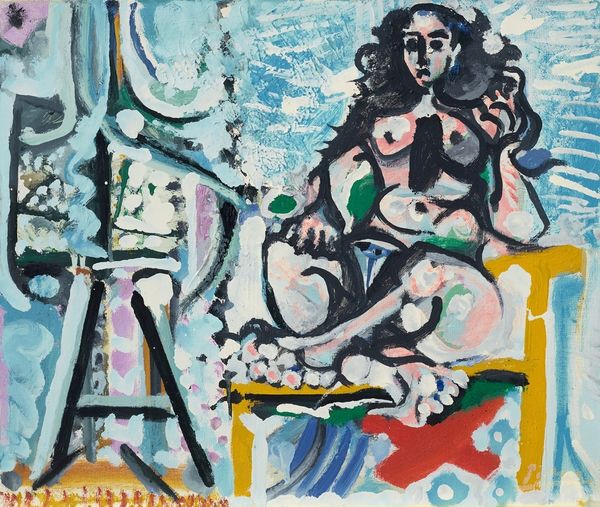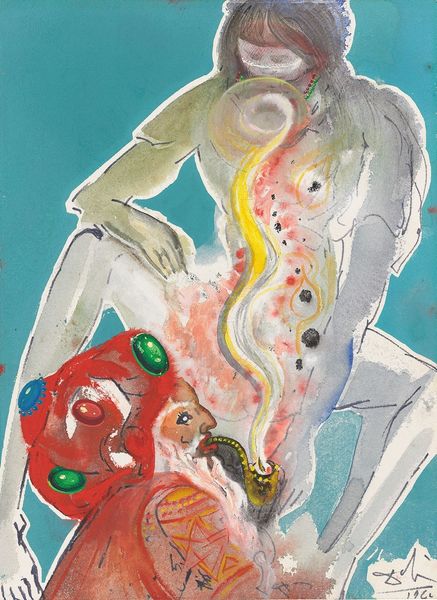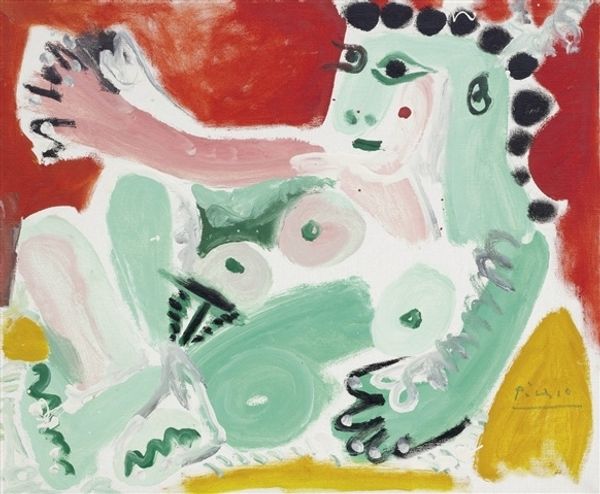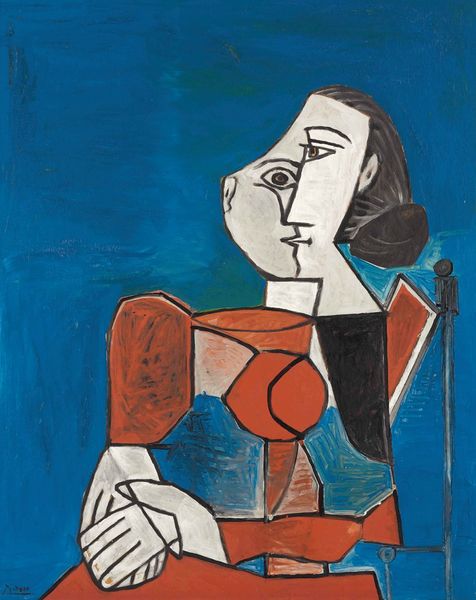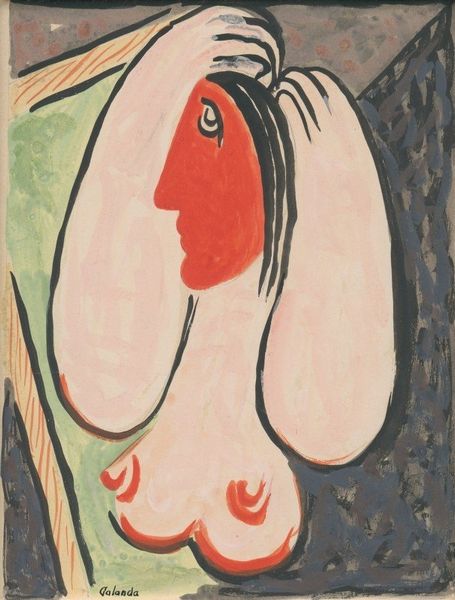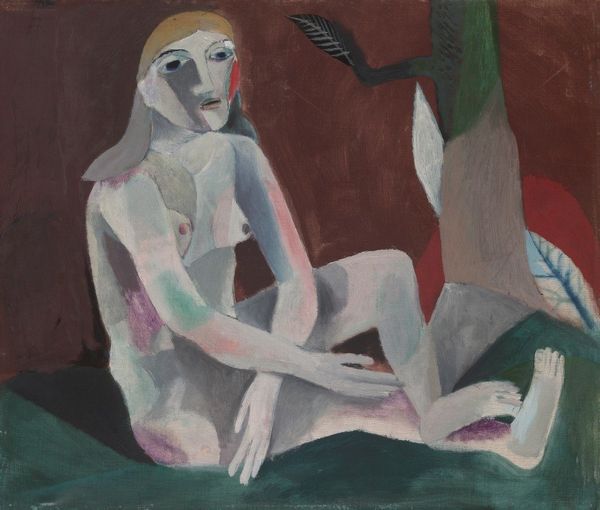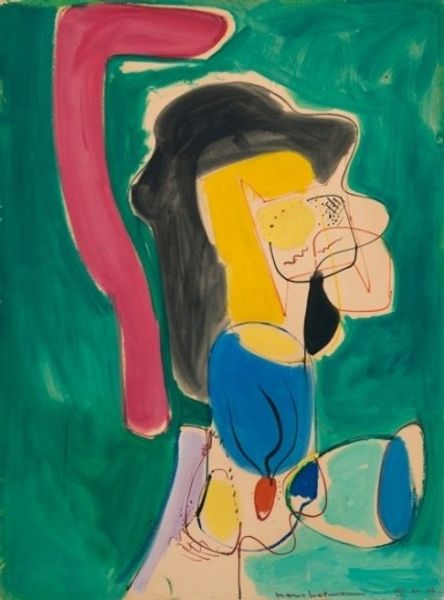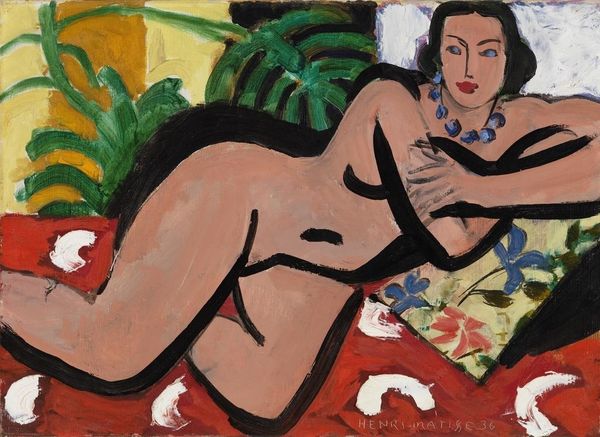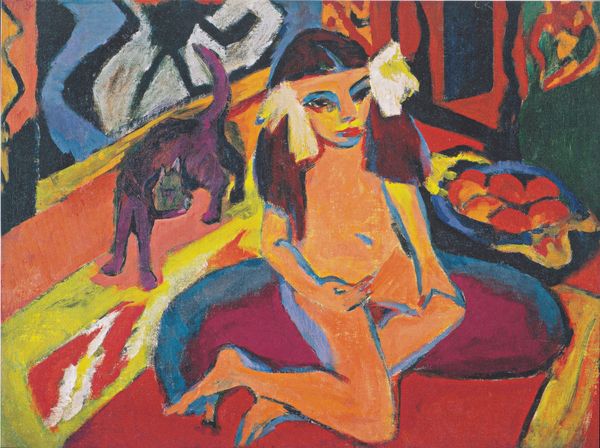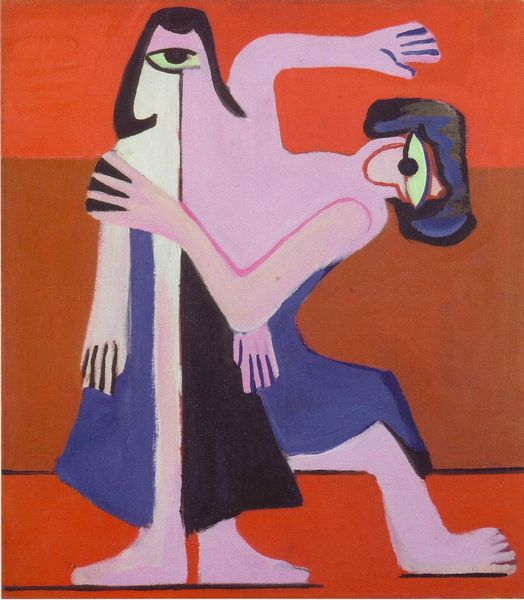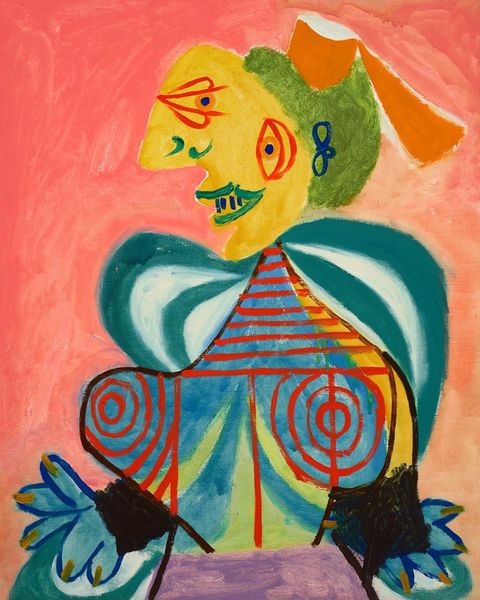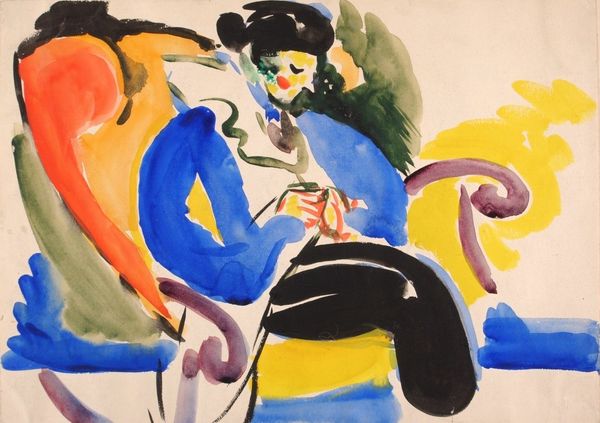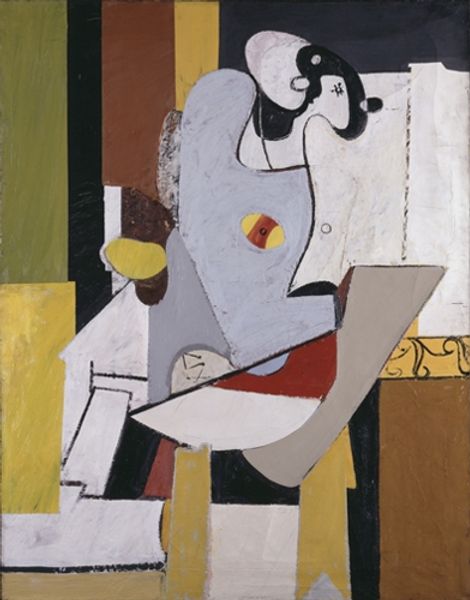
Copyright: Modern Artists: Artvee
Editor: This is Picasso’s “Nu assis sur un tapis rayé,” painted in 1964. It’s an oil painting of a nude woman reclining on a striped rug. The colors are striking – lots of pinks and blues, and her pose is very...unconventional. What’s your interpretation of this piece? Curator: It's tempting to read this painting purely in formal terms – the flatness, the vibrant color palette that verges on Fauvism – but situating it in its historical moment reveals more nuanced meanings. Picasso was in his eighties when he created this work. Editor: So what was going on historically at the time? Curator: Well, the art world was increasingly dominated by abstract expressionism and Pop Art. Here's Picasso, an established master, returning to a classical subject—the female nude—but through the lens of his signature Cubist language, yet also engaging with those emerging avant-garde styles. It's a statement, perhaps even a playful defiance, of the art world's changing landscape and an aging master asserting his continued relevance. Note, too, the male gaze here. Given his history, do you think it’s been reinterpreted? Editor: I never really thought of how he was placing himself back into art history in this specific moment in time. So interesting to think how political even a "simple" nude painting can be. Curator: Exactly! And remembering the power of institutions and the gaze… helps you understand what role it might have today, too. Editor: That gives me a totally different perspective! I guess you can't just look at the surface and need to understand the context! Thanks for explaining. Curator: Of course! Analyzing through a historical perspective offers a fascinating new layer to appreciation.
Comments
No comments
Be the first to comment and join the conversation on the ultimate creative platform.
